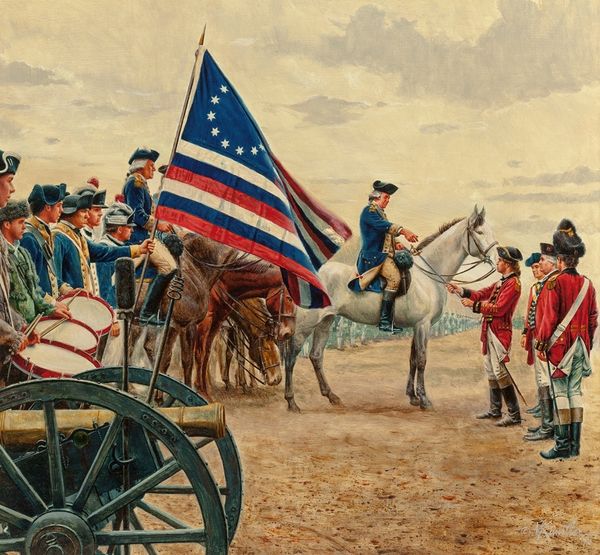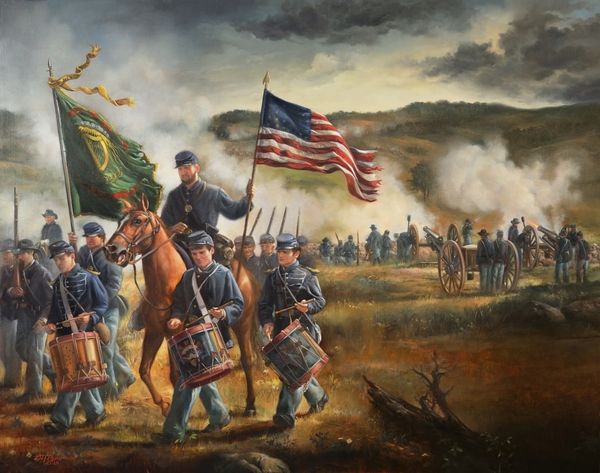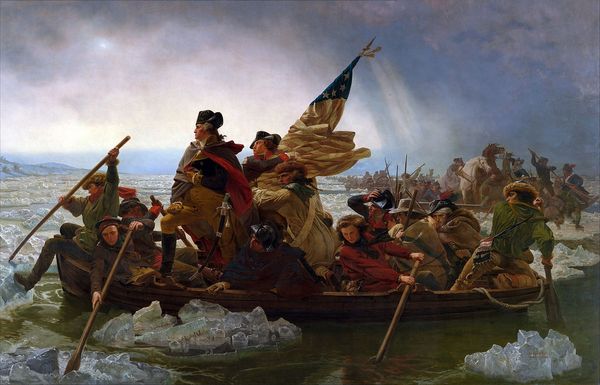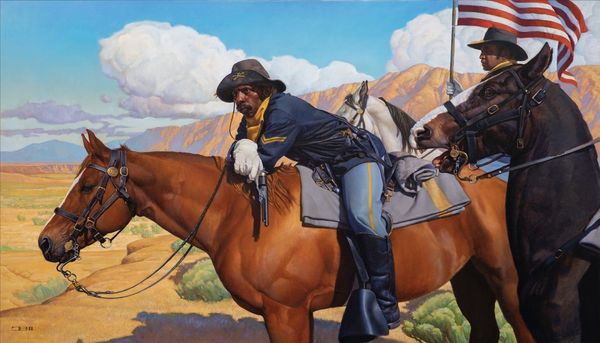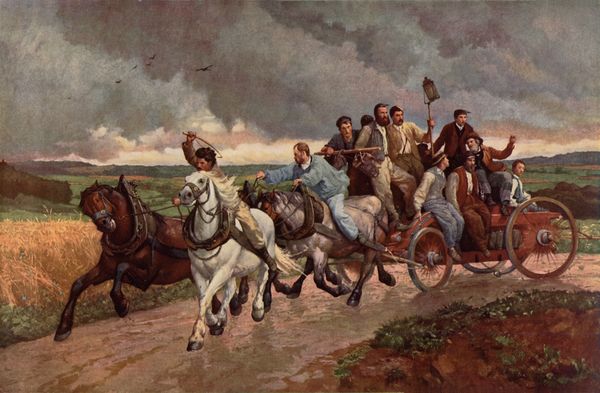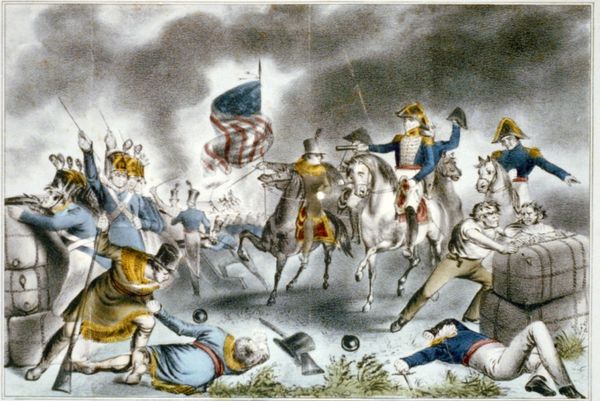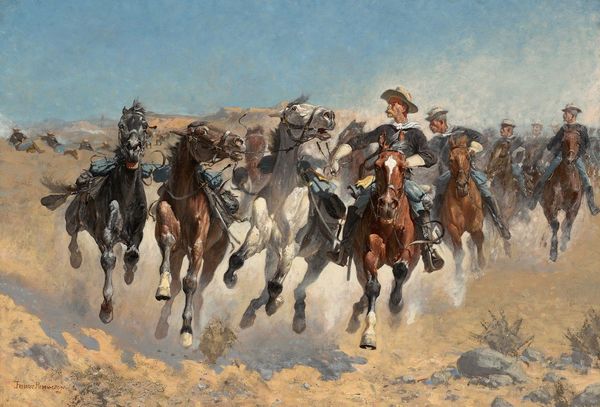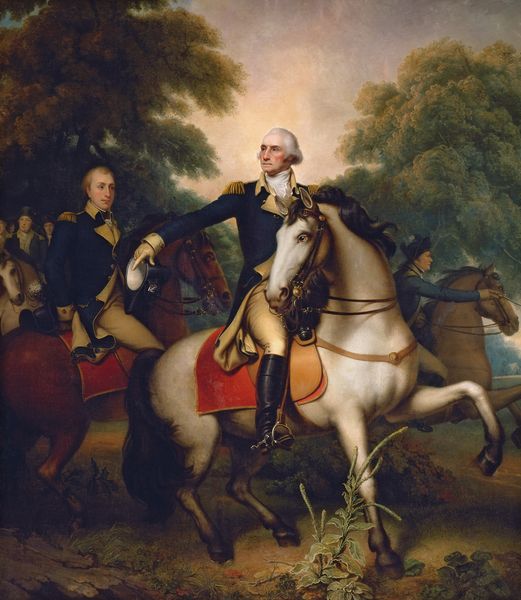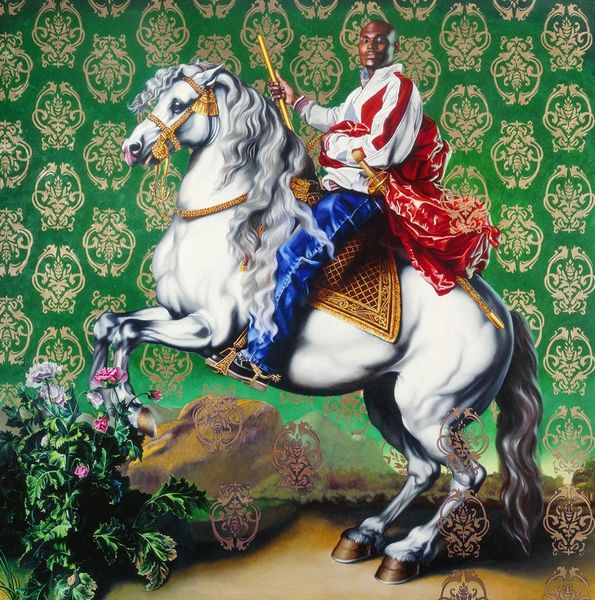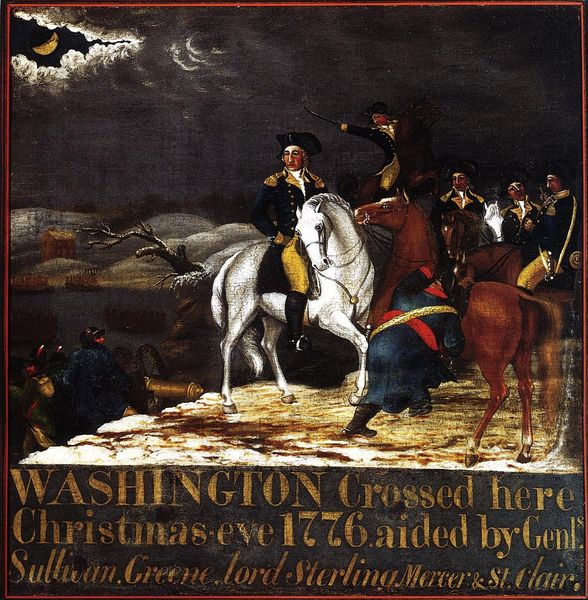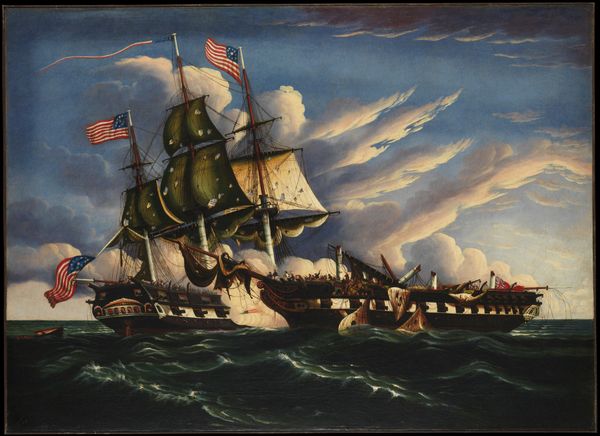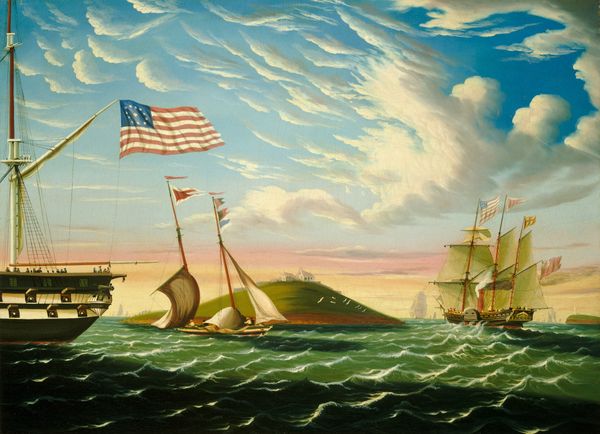
#
abstract painting
#
possibly oil pastel
#
oil painting
#
fluid art
#
acrylic on canvas
#
underpainting
#
naive art
#
painting painterly
#
watercolour illustration
#
watercolor
Dimensions: overall: 82.5 x 137.2 cm (32 1/2 x 54 in.) framed: 96.5 x 151 x 5.3 cm (38 x 59 7/16 x 2 1/16 in.)
Copyright: National Gallery of Art: CC0 1.0
Curator: The painting before us, believed to be created after 1864 by A.A. Lamb, depicts the "Emancipation Proclamation." It is quite an elaborate historical piece, isn't it? Editor: Indeed. The dynamism immediately strikes me—the diagonal composition, the horses charging forward. There’s a real sense of propulsion and movement, like history unfolding before our eyes. Curator: The imagery is quite potent. Lady Liberty in her chariot, leading the charge. The capitol building looms in the background while Lincoln, along with his troops, brings up the rear. Editor: It’s fascinating how the artist employs classic allegorical figures alongside such specific historical personages. Observe Lady Liberty, juxtaposed with Lincoln; how do those different representational modes work together here? It creates an interesting tension. Curator: It speaks to the way emancipation was conceived at the time, not just as a political act but as a moral imperative—even a divinely sanctioned one. The inclusion of broken weapons at the bottom certainly signifies the Union's victory and, indeed, new beginnings. The artist aims to cast the Emancipation Proclamation as both a pivotal moment in American history and the triumph of fundamental American ideals. Editor: I see that. There's a strong directional force leading us to the back where the Union soldiers and Lincoln are positioned. The perspective gives them prominence while leading us away from the chaos on the left of the frame, where we can see freed slaves expressing their jubilations, to a calm almost heavenly blue background. Curator: Exactly, the painting's narrative positions Lincoln as a leader delivering a nation from turmoil, a visual depiction reinforcing his place in history. Editor: After closer look, I notice that this is clearly a celebratory, even propagandistic, interpretation of the event and period it is depicting. All the characters appear so determined; even Lincoln exudes authority and confidence, although I would be keen to study what other interpretations and records about him at the time tell. Curator: It is a rather sanitized vision, isn’t it? It does leave one with much to consider regarding how we visually commemorate transformative but difficult historical moments. Editor: Agreed. And that is, in itself, rather telling. Thank you.
Comments
No comments
Be the first to comment and join the conversation on the ultimate creative platform.
